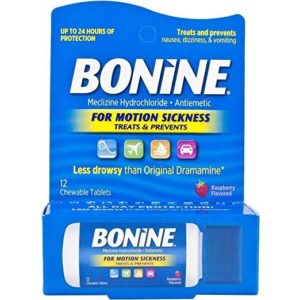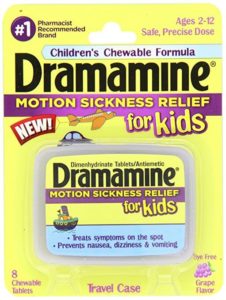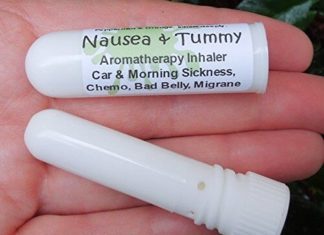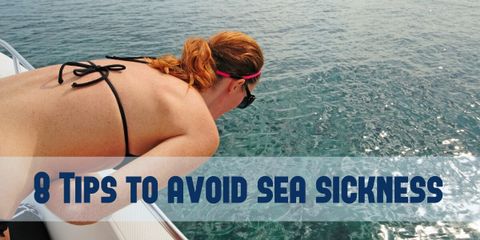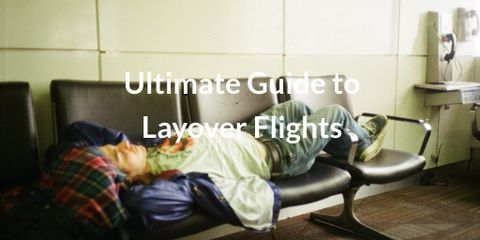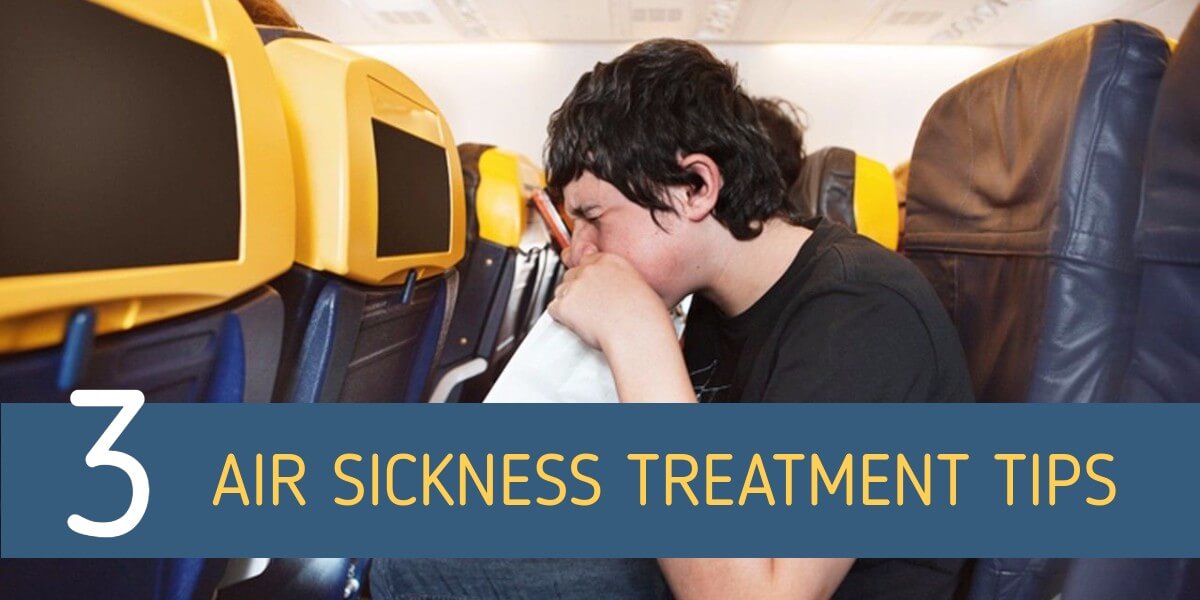
Air Sickness: 3 Scientifically Proven Ways to Treat and Prevent It
I once flew in a Dakota – one of those places where you must walk uphill to get from the door to your seat. And the flight attendant handed everyone a paper bag as we boarded! The chance of being airsick was clearly very high!
Today’s planes have better air pressure control and air conditioning and the number of people being physically ill on planes seems to have dropped considerably. Nonetheless, some people are susceptible to being sick when they fly. Even pilots and aircrew struggle.
So, let’s answer some questions about air sickness and then look at the 3 main ways to deal with it.
What is Air or Flight Sickness?
Air or flight sickness is a type of motion sickness. People can be sick when they travel by boat, bus, train and, quite commonly, by car. Even watching a 3D movie can trigger it.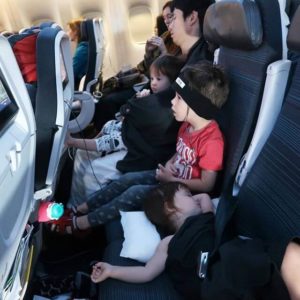
It happens because your brain is confused by mixed messages from your eyes, your ears, and your muscles.
In a plane,
- your eyes can’t see that you are moving;
- your inner ear is responsible for balance and senses the movement;
- your muscles may be adapting to gravity and the motion of the plane.
- Your brain’s confusion translates into skin pallor, cold sweat, bowel discomfort, headache, nausea and, finally, vomiting.
If we ask whether someone has ever been airsick, these are the symptoms we generally think about.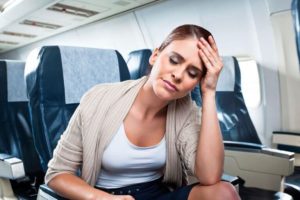
What many people don’t know is that motion sickness can also cause cognitive difficulties – the so-called “Sopite syndrome”. The symptoms are “excessive drowsiness, lassitude, lethargy, mild depression, and reduced ability to focus on an assigned task”. These symptoms can exist without any of the nausea symptoms.
How to Tell if you have Air Sickness?
- Have you ever found yourself to be drowsy on a plane, even if it’s early and you’ve had a good night’s sleep?
- Do you struggle to sleep after a trip – even if you haven’t crossed any timelines?
- Have you felt vaguely irritable or “down” on a trip? These are the signs of airsickness.

The Sopite syndrome may be uncomfortable for travelers, but it can be extremely dangerous for pilots and aircrew (some research has shown that up to 70% of aircrew have reported being airsick at some point).
Military excursions have been known to fail because the soldiers have become incapacitated along the way. One study looked at the incidence of motion sickness in medical personnel: 46% reported nausea and 65% reported Sopite syndrome.
Usually, the symptoms stop once the motion stops. Unfortunately, for some people, the symptoms persist even when the motion has stopped. Sopite syndrome can continue after you have landed. Some of the reported longer-term symptoms are lethargy, malaise, agitation, disinclination for work and lack of interest in group activities.
I must say, this list made me stop and think. Perhaps when we are so tired and grumpy after a flight, it might be because we are suffering from airsickness?
Who is most likely to suffer from Air Sickness?
A very large study of over a million airline passengers between 1946 and 1947 showed that 75% reported air sickness. This was probably because of poor aviation technology at the time. But a 2000 study across 38 airlines showed that, while the overall numbers had decreased, up to 48% of passengers on some flights had some form of air sickness.
The problem with these studies is that they were measuring only the people who reported nausea and vomiting – so the number may be much higher.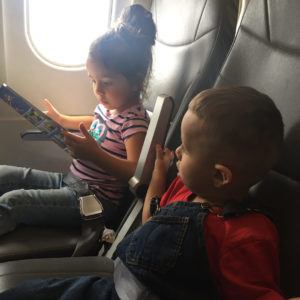
Some people are more susceptible than others:
- Children between the ages of 2 and 12. Apparently, up to the age of 2, children are immune to motion sickness.
- Women, especially during menstruation and pregnancy. Some studies show a ratio as high as 7:4 of women to men who suffer from airsickness.
- People with a history of migraines.
- Those with high levels of stress and anxiety (about flying or for other reasons).
- Those who have used alcohol, drugs and other medication. (Fortunately for those who like to have a glass of wine with their dinner during a long flight, one study showed no link between moderate amounts of alcohol and airsickness!)
The 3 Scientifically Proven Ways to Prevent or Treat Air Sickness
It seems that there are three main things you can do to prevent and treat air-sickness:
- Habituation
- Medication – conventional and alternative
- Practical behavioral steps
Habituation
The more you fly, the less you are likely to get airsick. (This is good news for all of you who love to travel, but may have experienced some air sickness in the past!)
One of the reasons given for the decrease in the number of people who vomit on planes is that people are simply traveling more, and desensitizing themselves. It may also be why children, who may not have traveled often, are more susceptible.
Repeating an activity until you get used to it is called “habituation”. It is a technique used very deliberately in the aviation industry, particularly to help trainee pilots. Most of them seem to get over airsickness after 3 or 4 flights, although it may return when they start to learn more complicated maneuvers. For those who don’t, special training is given, usually involving rotating and oscillating platforms or chairs together with breathing and relaxation techniques.
You probably don’t have access to an oscillating platform! But you might train yourself by taking a few short flights, very close to each other, so that your brain starts to adjust to the mixed messages it is receiving.
Another benefit is that, while you may experience short periods of airsickness, they will not be enough to make you feel overwhelmed. This helps to build confidence and to reduce anxiety. It is a typical cognitive behavioral therapy technique. In a study of pilots who sometimes had motion sickness, 86% of them got better through this technique.
Medication
Conventional medications:
If you use conventional medication, it is very important to check the side effects, the suitability for children and possible interactions with other medications you may be taking. Some may cause drowsiness, dry mouth, and blurred vision. Self-medicating may not be a good idea!
- The most commonly prescribed medication for airsickness is Scopolamine. It is a patch to stick behind your ear. You must apply it at least 6 hours before you travel, and the effects can last up to 3 days. One study showed that if you used Scopolamine together with habituation techniques, the habituation was speeded up.
- Promethazine (Phenergan) is an antihistamine that also helps for nausea. It is a sedative. Apparently, promethazine together with caffeine relieves airsickness in helicopter passengers.
- Dimenhydrinate (Dramamine), Cyclizine (Marezine), and Meclizine (Bonine) are all antihistamines. There are quite strong warnings not to use them for children, and, in some cases, for those over 65.
Alternative remedies
Ginger, peppermint and black horehound are the most common alternative remedies suggested for air sickness. Some people swear by them and carry packets of ginger or peppermint sweets with them. I even saw an aromatherapy inhaler with ginger and peppermint that would be easy to carry onto a plane.
Homeopathic treatments include Borax (especially for those who feel ill when the plane tilts downward and when it lands), Cocculus (if you have both dizziness and nausea), Nux Vomica (if you have a headache with the motion sickness) and Tabacum (for vomiting)
Acupuncture or acupressure are said to be helpful. The acupuncture point that relieves nausea is on the inside and center of your wrist. Measure 2 fingers up your arm from where your wrist bends. You might be able to buy a wristband that has a button to apply acupressure on this spot.
Practical behavioral steps
Here are some practical steps that you can take:
Book a window seat near the front or over the wings, where there is less motion. Try to focus on the horizon – this stabilizes your balance.
Avoid heavy meals and alcohol for at least 24 hours before the flight and on the flight.
Drink plenty of water. Sucking ice helps.
Don’t read or play hand-held games. It’s better to watch a movie, and especially one that is on a screen some distance away from your seat.
Listen to music. This helps to take your mind off feeling sick and reduces anxiety.
Switch on the air vents and make sure you have air blowing around your face. A hand-held fan might help.
Use a neck pillow or the seat headrest to stabilize your head movements.
Stand up and walk around – this also helps your brain to work out how to get your body into balance.
Take slow, deep breaths. Some say that you feel better because this type of breathing lowers anxiety. But if it works, it’s worth a try.
Practice relaxation techniques. One technique is to tighten and release each muscle in your body, from your feet up. Another is Mindfulness – ie concentrating on just one thing, and allowing everything else to fade from your mind. This is helpful, because thinking about how sick you feel just makes it worse. So deliberately think about something else.
Browse Motion Sickness Remedy Products Online
Ready to Feel Better Now?
I hope that this article has helped you to understand better what air or flight sickness is, who is likely to get it, and what you can do to treat it, or better yet, avoid it altogether! You can try habituation, medication or practical behaviors – or all three – to make sure that your flying experience is symptom-free.
The good news is that the more you travel the less likely you are to suffer from air sickness! So, keep traveling.
Please let us know if you have any tips and advice for travelers.
Written By Kate Mark

Kate is a mid-lifer who quit a growing corporate career to reawaken her passions and her lifelong dream of traveling the world.

